Red wings may be a sign birds are in their breeding season. Many species change their dull wing colors to red nuances as they prepare to breed.
This is a trait of male birds but there are species where both males and females change into red wings during the breeding season.
Even more, some birds have red wings throughout the year. They can show bright red, dark red, chestnut-red, or brown-red nuances regardless of the season.
The following species with red wings live around the world and come with different red nuances which difference their appearance.
Table of Contents
1. Red-winged Blackbird
Named after the appearance of the male, Red-winged Blackbirds (Agelaius phoeniceus) have red shoulders or base areas of the wings.
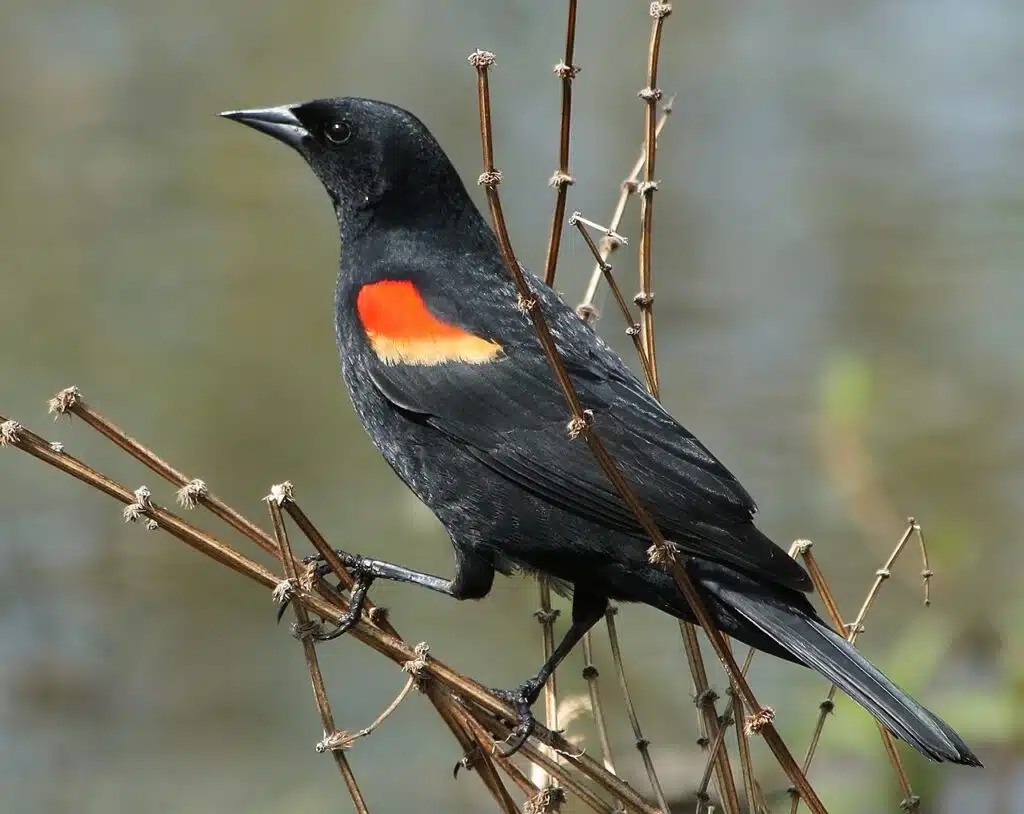
These red areas are backed by yellow margins. The rest of the wings and the plumage of the bird itself are black, which means the red shoulders stand out even more.
Red-winged Blackbirds are sexually dimorphic, males and females have different looks.
The female of the species has no red shoulders and no black plumage in favor of gray and brown plumage.
Red-winged Blackbirds may be spotted across The United States as these birds are migratory. They move from the Canadian territories to Baja California and Mexico to overwinter.
If Canadian Red-winged Blackbirds migrate South to overwinter, US populations tend to be residents.
Distribution – Canada, United States, Mexico, Cuba
2. Tricolored Blackbird
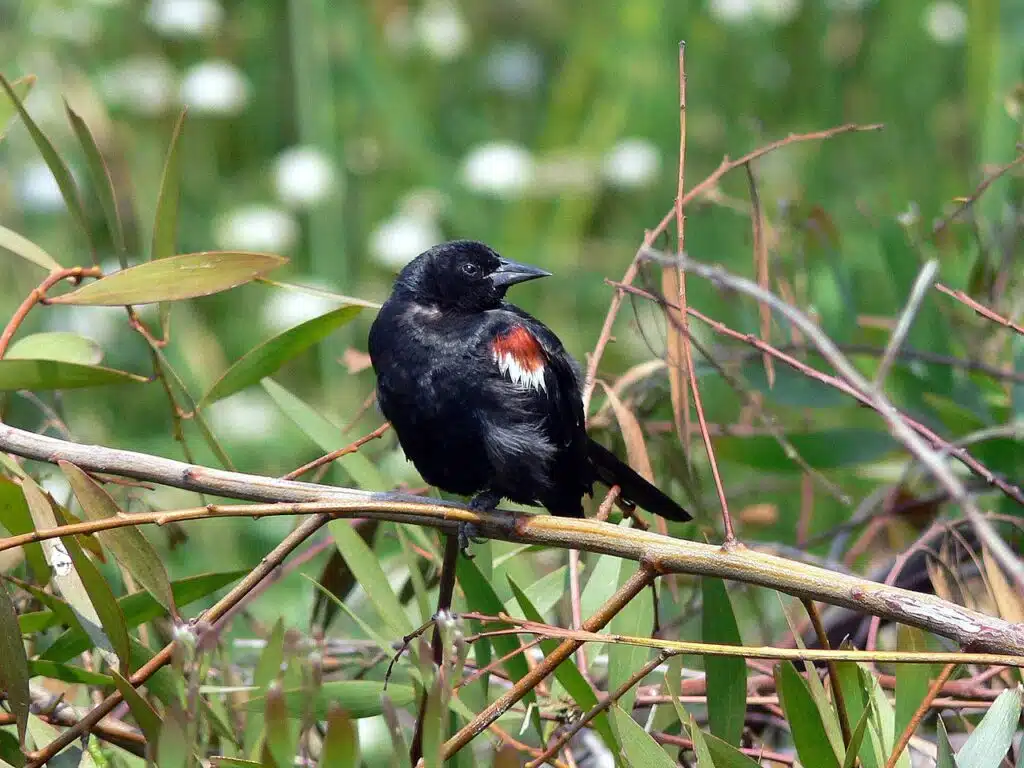
Tricolored Blackbirds (Agelaius tricolor) are highly similar to Red-winged Blackbirds. They also have black plumage and red shoulders, in the case of males.
Red patches at the base of the wings have a lower white margin, instead of a yellow margin as seen on Red-winged Blackbirds.
Tricolored Blackbirds also show a different habitat.
While their habitat overlaps in California, Tricolored Blackbirds are mostly found in California, and not in other regions of The United States and Canada as The Red-Winged Blackbird.
This species lives in very large colonies and is present in The US in hundreds of thousands. By some estimates, these might be some of the largest bird colonies on the continent.
Distribution – California, Baja California, Oregon
3. Montezuma Oropendola
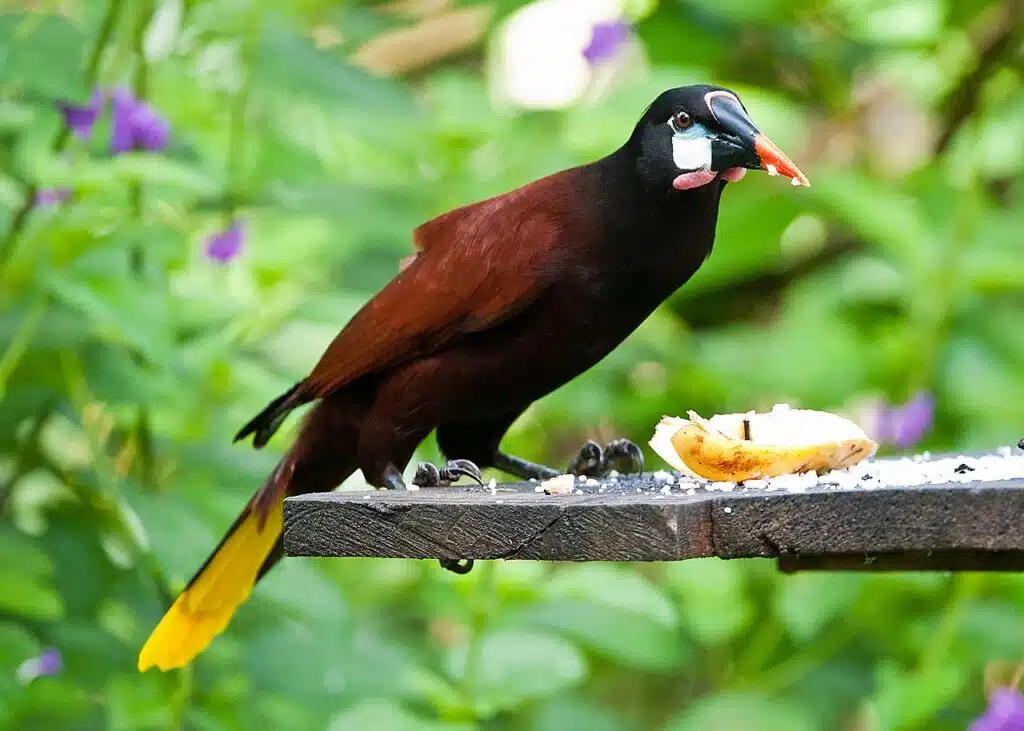
Chestnut-red wings are seen on The Montezuma Oropendola (Psarocolius montezuma).
A multicolored appearance is specific to this species, but mostly to its head. A black cap is contrasted by bright blue face areas and a black and orange-red beak.
Long bright yellow tails are also seen on Montezxuma Oropendolas.
Birds of this species are only found in woodlands, building multiple nests on a single tall tree and living in small colonies.
The nests of The Montezuma Oropendola are also distinct. They look like a pendulum and hands from tree branches.
Birds of the species feed on the multiple fruits available in the moist Central American forests.
Distribution – Mexico, Guatemala, Costa Rica, Nicaragua, Panama
4. Red-winged Starling
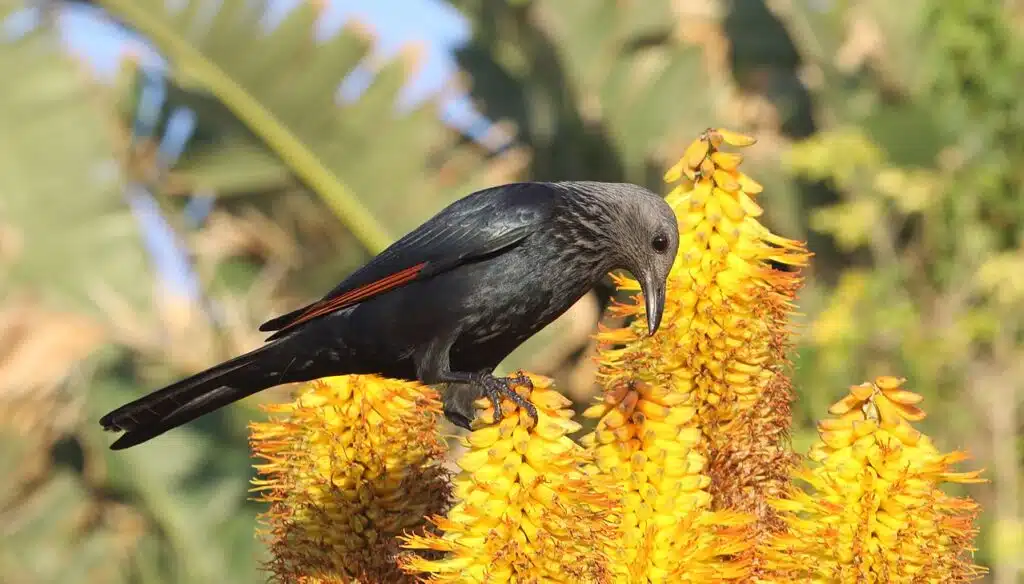
Red-winged Starlings (Onychognathus morio) are native to the Eastern regions of Southern Africa.
This is a species with sexual dimorphism with only the males showing red wing tips. Orange, orange-red, or red wing tips are seen on males which are mostly black otherwise.
Females have a gray-blue appearance with a metallic sheen and a uniform color without any colorful feathers.
Red-winged Starlings feed on different types of plants and their fruits starting with honey flowers.
In some African regions, Red-winged Starlings are found resting on different animals.
Distribution – Ethiopia, Kenya, Uganda, Sudan, Botswana, South Africa
5. Tristram’s Starling
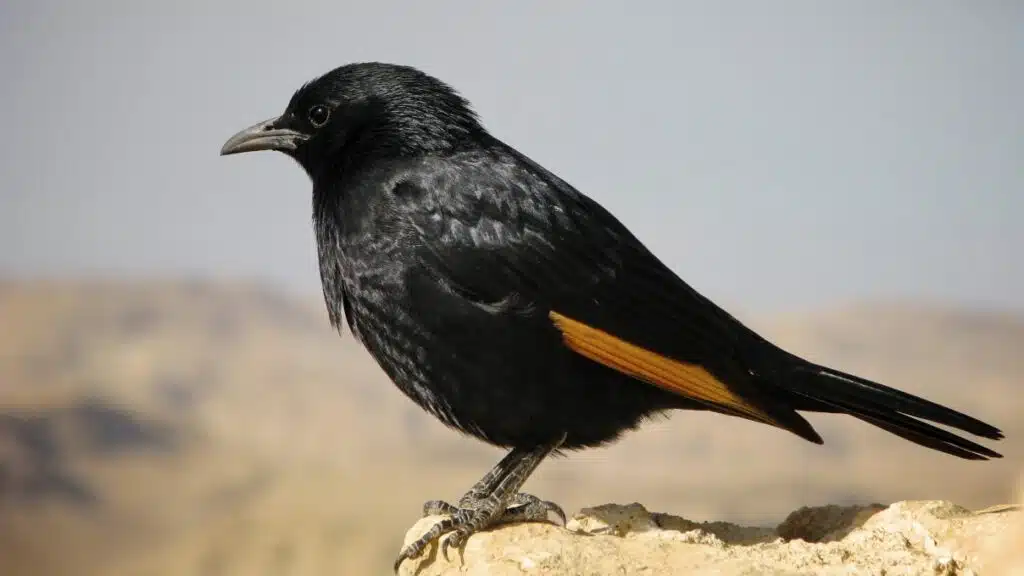
Both male and female Tristram’s Starlings (Onychognathus tristramii) have orange or orange-red wing margins.
The species may show red wing margins in its breeding period, especially on males. Both sexes are black but females have a gray head.
These birds also stand out with their distinct howl-like vocalization. It lives in small numbers and small groups throughout the year.
Once the breeding season begins, Tristram’s Starlings are living in pairs.
After breeding, the pair continues living together up until the following breeding season.
Distribution – Middle East
6. Red-winged Parrot
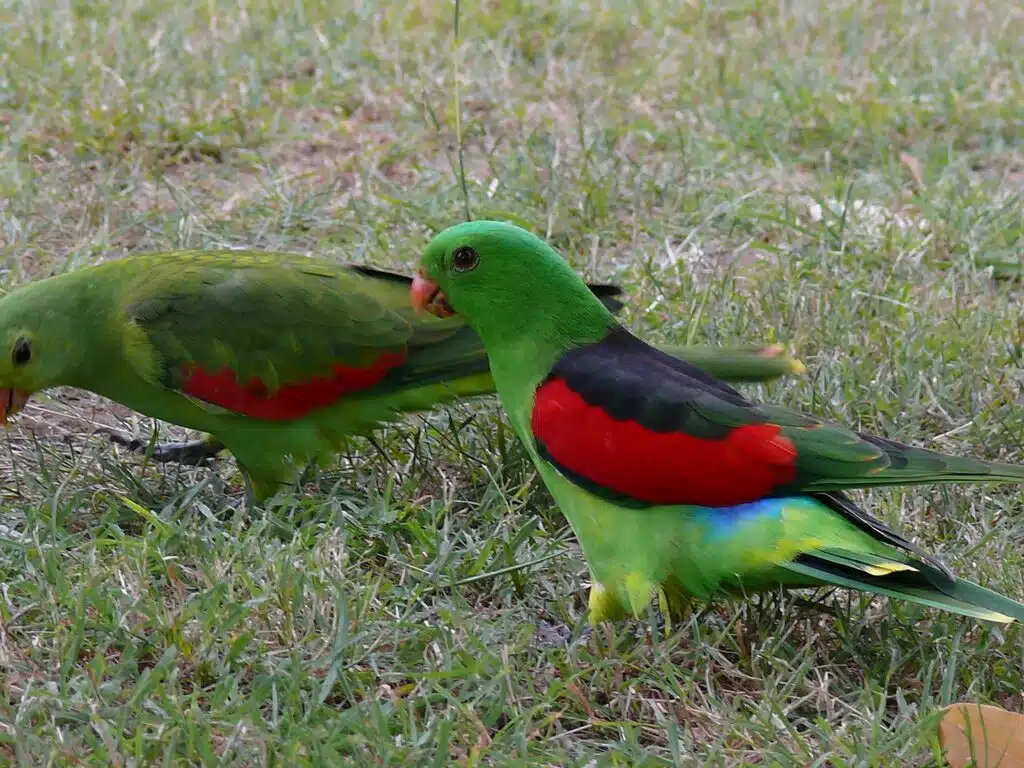
A parrot seen in woodlands and even on farms, The Red-winged Parrot (Aprosmictus erythropterus) is a species named after the vivid red color of the wings.
A multicolored appearance is what makes the species popular. While its outer wings are red, its inner wings are black.
Its head and underbelly are green while the tail shows blue, black, and yellow color combinations.
Reaching a size of up to 13 inches, Red-winged Parrots may come into adult plumage a different times. Females reach their adult plumage faster.
Distribution – Northern and Eastern Australia, New Guinea
7. Collared Pratincole
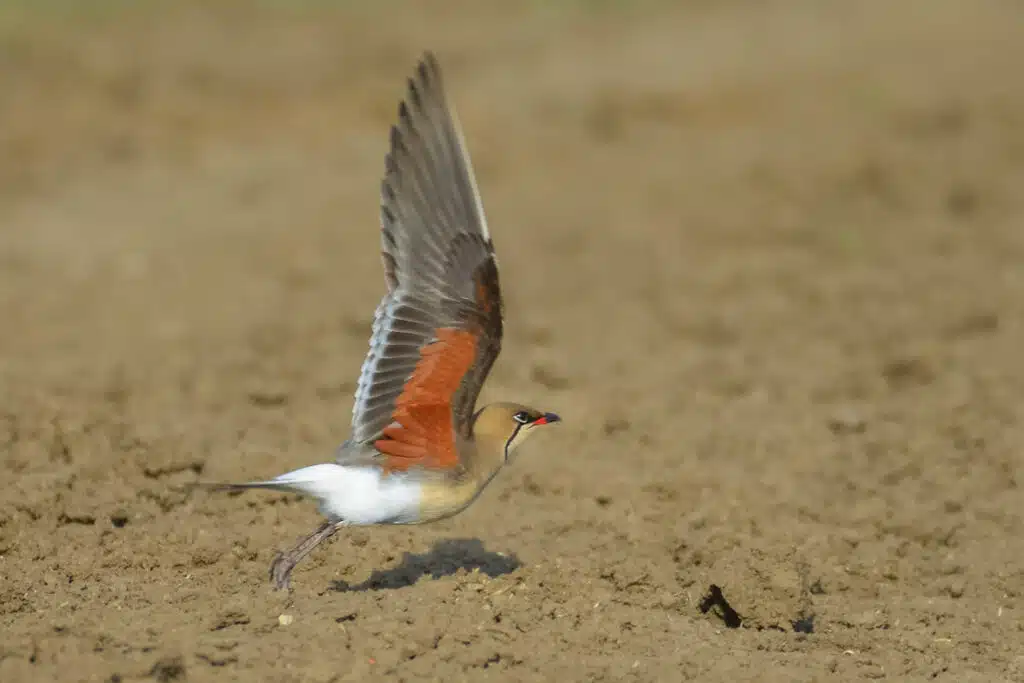
Like many other birds of the world, Collard Pratincoles (Glareola pratincola) change their plumage in the breeding season.
Male Collard Pratincoles get red ventral wings in the breeding season to attract more prospective mates.
Gray and brown nuances dominate the appearance of Collared Pratincoles.
These types of birds get their final plumage only when they become adults as juveniles are grayer.
A distinctive black necklace-like band is also seen on the face of the species.
Females are a bit more dull colored but males start to show red wings and even a red bill going into the breeding period.
Its dorsal wings remain gray or gray-brown and black, as only its ventral wings turn red.
Distribution – Europe, Africa, Middle East
8. Red-winged Fairywren
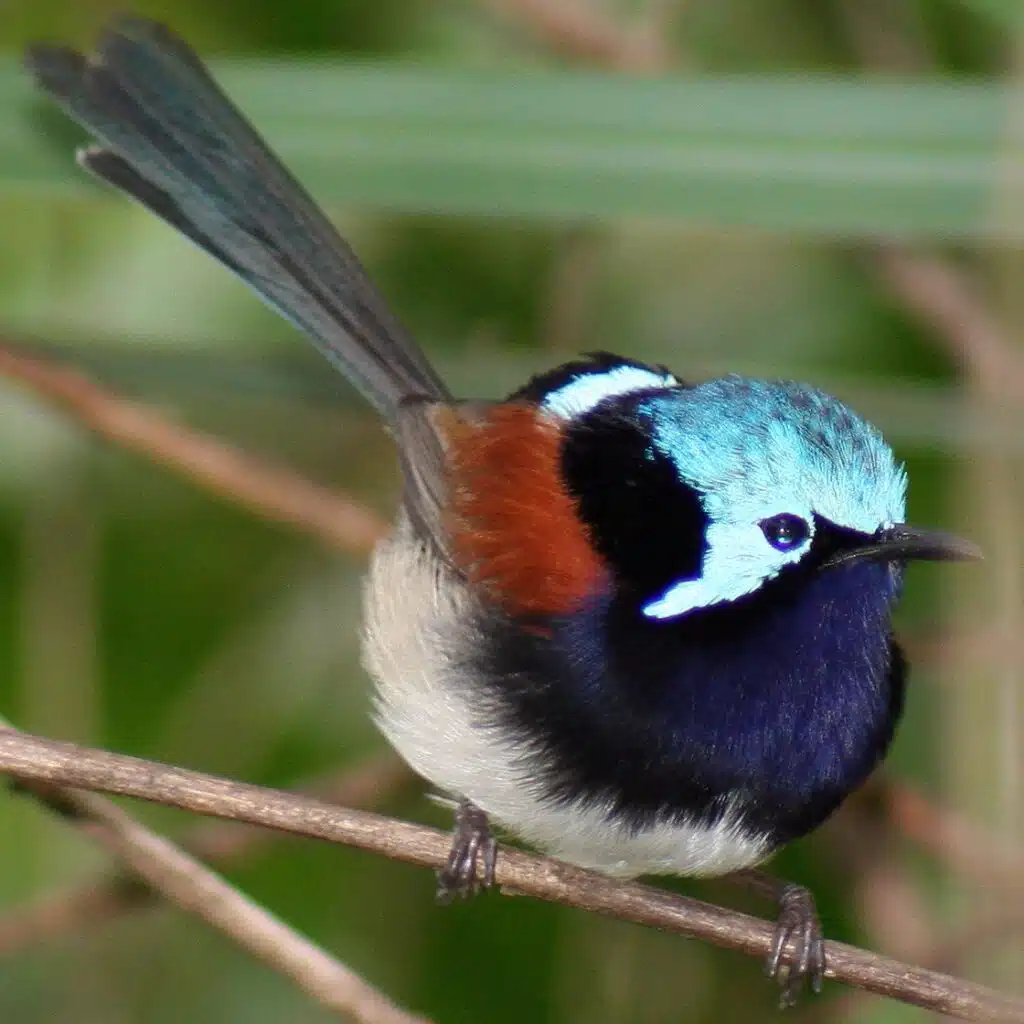
Also, an Australian native, The Red-winged Fairywren (Malurus elegans) is one of the color-changing birds of Western Australia.
This is a species with red-brown wings and a colorful blue crest seen going into the breeding season.
Its red wings have dark nuances but are visible as the rest of its body is black and blue.
Red-winged Fairywrens also have long black and blue wings.
The entire plumage of male Red-winged Fairywren changes into adulthood.
These types of birds can be gray, which is also the case for females. They become black, red, and blue into the breeding season.
Young birds of the species also exhibit bright gray nuances.
The birds aren’t migratory. They spend their entire lives in wet forests and swampland. Almost any area of the forest rich in tall grasses such as sedges is good for the birds.
Distribution – Southwestern Australia
9. Red-winged Pytilia
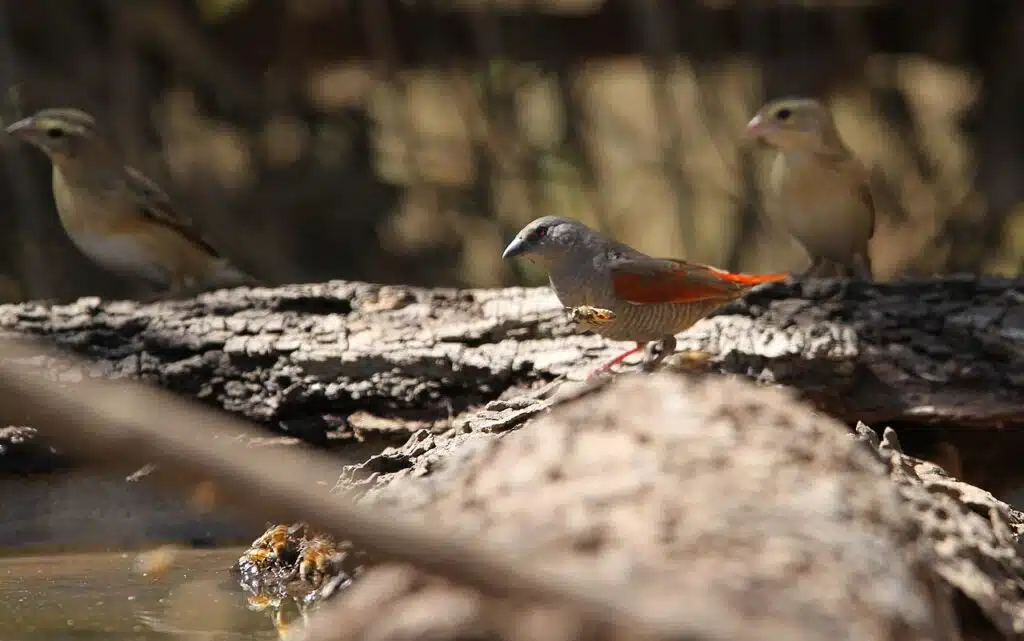
An African native, The Red-winged Pytilia (Pytilia phoenicoptera) is among the species with vivid red wings.
Male and female Red-winged Pytilias are known for their red wings. Males may have slightly brighter red nuances as opposed to the dominant red-brown or rust-red nuance on female wings.
Both males and females are dominated by gray plumage, alternated with white plumage.
Gray and white bars are seen across its chest and belly. These alternating bars give the species its distinct appearance as the head has a common gray nuance while their beaks are dark gray.
Mostly living solitary lives in areas with plenty of vegetation and around water, Red-winged Pytilias are rarely seen in groups.
Distribution – Uganda, Togo, Nigeria, Guinea, Sierra Leone
10. Red-winged Laughingthrush
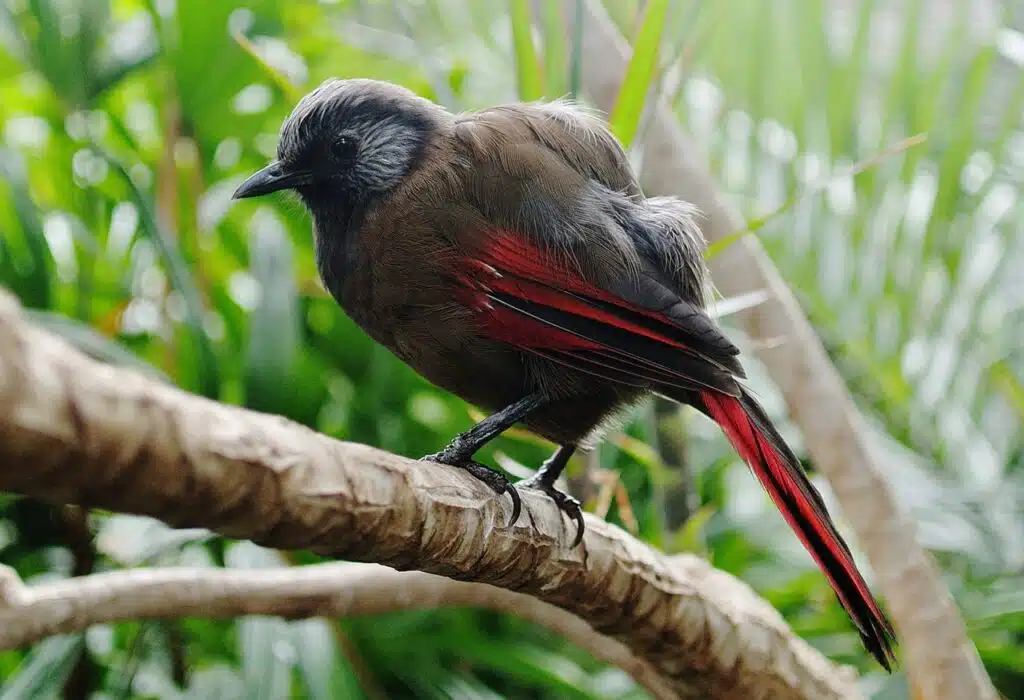
Red-winged Laughingthrush (Trochalopteron formosum) is a species dominated by red nuances across the wings and tails.
This species is named after the red feathers of its outer wings but red coloring continues down the body to the tip of its long tail.
Dark red nuances are specific to these birds which generally have a dark appearance. Black and brown feathers are mixed with red feathers on their wings.
Its back and belly are also mostly brown. A silver-white cap is specific to the head of the species.
A species that never flies at high altitudes, Red-wing Luaghingthruses spend most of their lives on the ground or flying just above the ground.
They rarely live in groups which means they can be difficult to spot, especially due to their dark appearance.
Distribution – China
11. Wattled Jacana
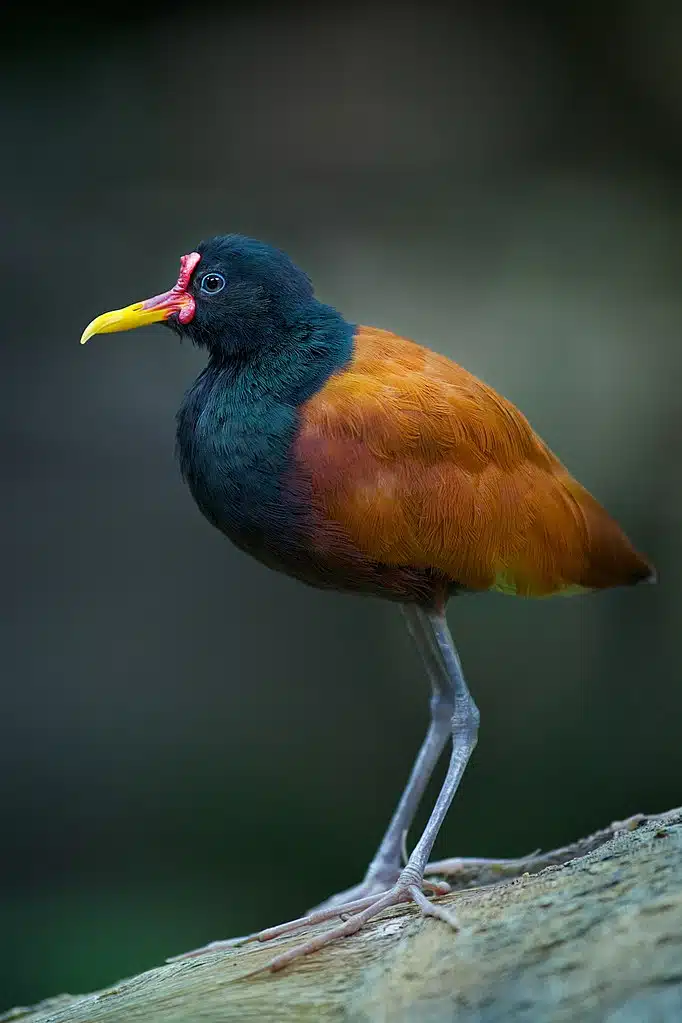
A black species throughout the year, male Wattled Jacanas (Jacana jacana) show their red wings going into the breeding season.
Dark red wings are seen on males both on the dorsal and ventral sides. These birds also have a red face and area around the bill but their wings have a darker red nuance.
The lower body and underbelly also become red-brown while the rest of the body remains green.
An important distinction of this species over other similar birds of the genus is the yellow margins of the wings.
These yellow margins are seen from a young age.
Jacanas of this family have long adapted legs which allows them to walk around tall vegetation and in swamps for food.
Distribution – South America
12. White-browed Coucal
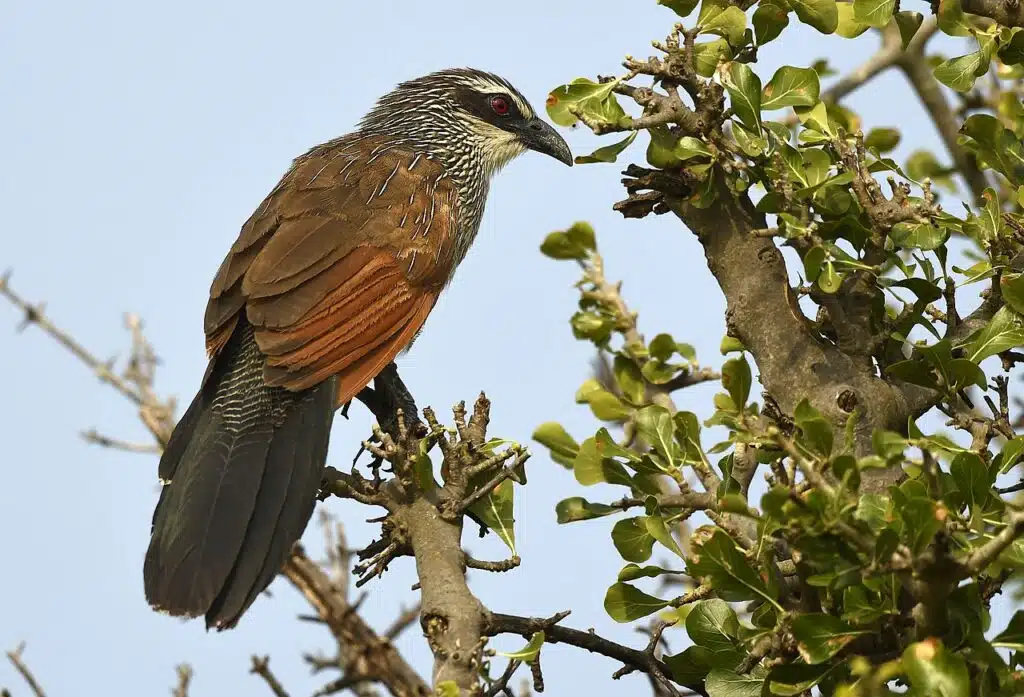
A species with colorful contrasting wings, The White-browed Coucal (Centropus superciliosus) shows brown-red wings of a chestnut nuance.
A white underbelly and a white face are specific to this species with a black crown and a long black tail.
Both males and females have similar plumage with even the juvenile White-browned Coucals showing a similar appearance with chestnut-red wings.
Some of the warmest parts of Africa and The Middle East are all part of its habitat.
Scrubland and coastal areas are preferred by the species.
Its call is distinct and compared to bubbling water sounds.
Distribution – East Africa, The Middle East